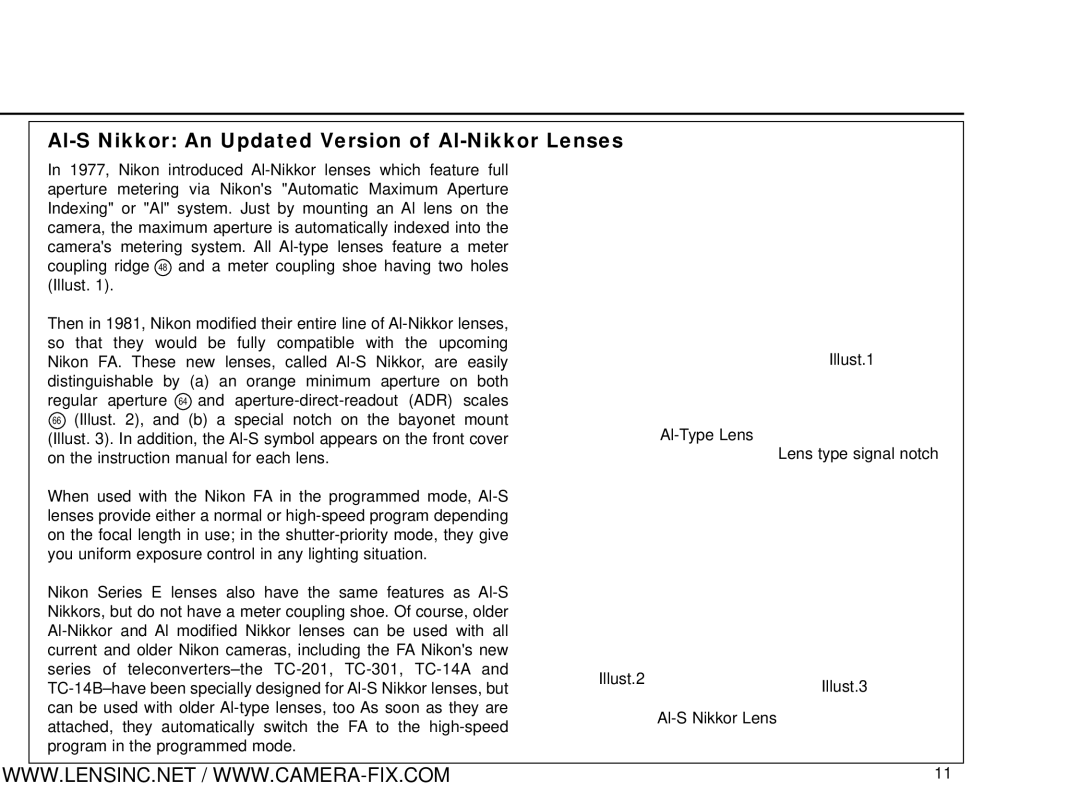In 1977, Nikon introduced Al-Nikkor lenses which feature full aperture metering via Nikon's "Automatic Maximum Aperture Indexing" or "Al" system. Just by mounting an Al lens on the camera, the maximum aperture is automatically indexed into the camera's metering system. All Al-type lenses feature a meter coupling ridge 48 and a meter coupling shoe having two holes (Illust. 1).
Then in 1981, Nikon modified their entire line of Al-Nikkor lenses, so that they would be fully compatible with the upcoming Nikon FA. These new lenses, called Al-S Nikkor, are easily distinguishable by (a) an orange minimum aperture on both regular aperture 64 and aperture-direct-readout (ADR) scales
66(Illust. 2), and (b) a special notch on the bayonet mount (Illust. 3). In addition, the Al-S symbol appears on the front cover on the instruction manual for each lens.
When used with the Nikon FA in the programmed mode, Al-S lenses provide either a normal or high-speed program depending on the focal length in use; in the shutter-priority mode, they give you uniform exposure control in any lighting situation.
Nikon Series E lenses also have the same features as Al-S Nikkors, but do not have a meter coupling shoe. Of course, older Al-Nikkor and Al modified Nikkor lenses can be used with all current and older Nikon cameras, including the FA Nikon's new series of teleconverters–the TC-201, TC-301, TC-14A and TC-14B–have been specially designed for Al-S Nikkor lenses, but can be used with older Al-type lenses, too As soon as they are attached, they automatically switch the FA to the high-speed program in the programmed mode.

